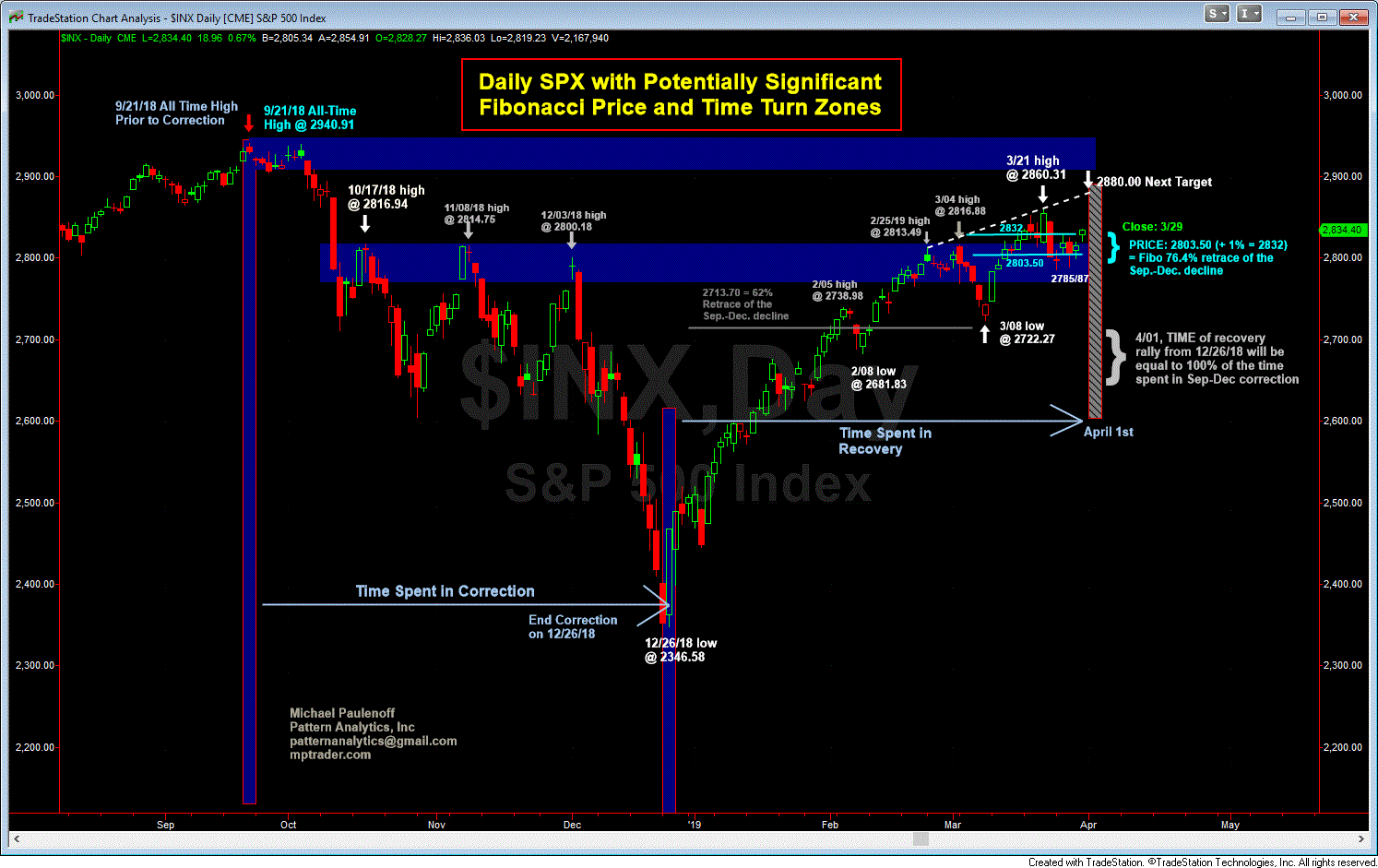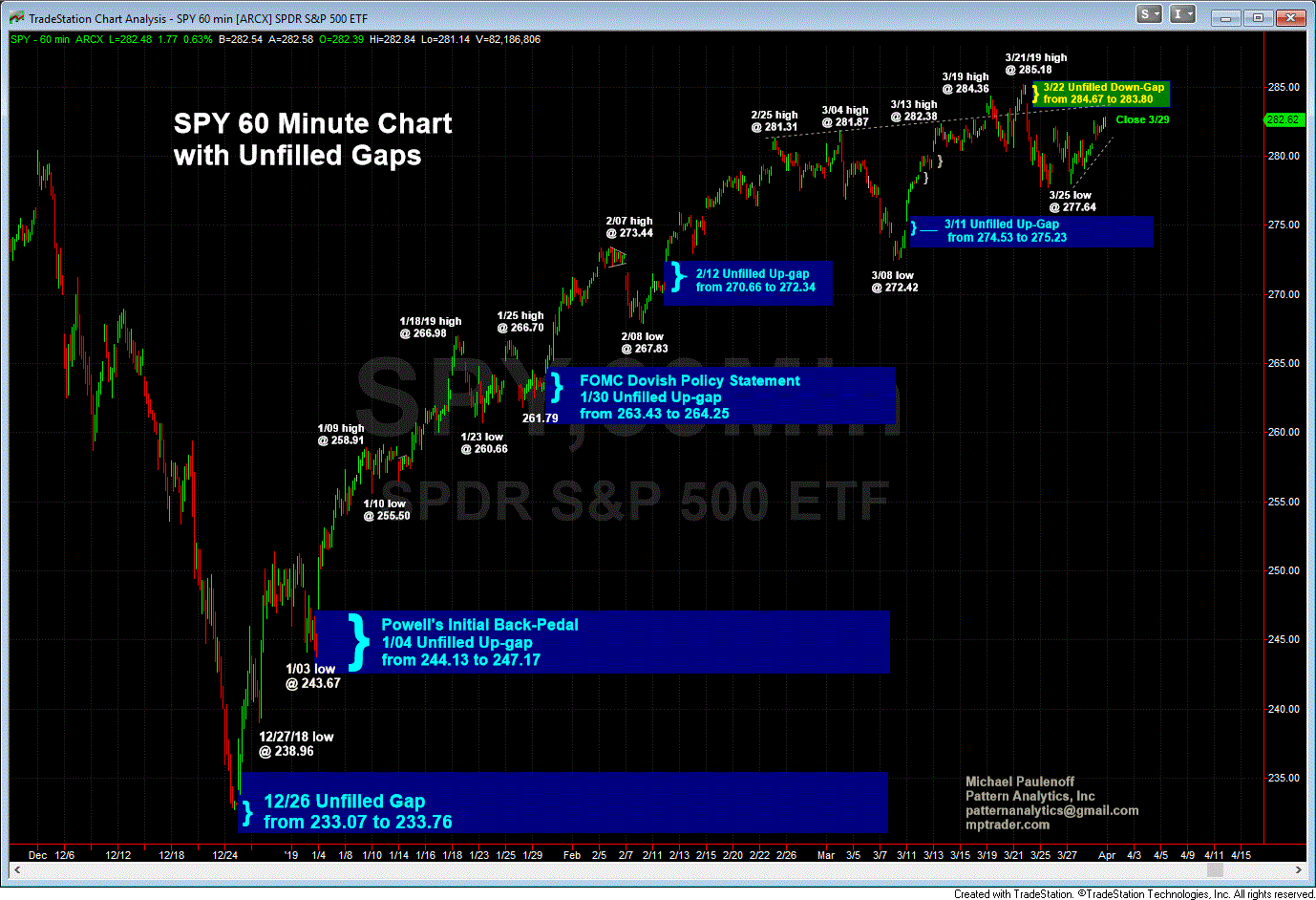After performance results for the record books in the first quarter of 2019, the stock market is entering a very challenging period in April.
To be sure, the success and presumed benefit from a US-China Trade deal remains a big economic and geopolitical carrot stick for the markets in the days ahead. How much of the anticipated trade deal dividend already has been discounted by the impressive Q1 gains is anyone’s guess at this point. Certainly, both the adjustment of the Fed’s interest-rate trajectory and the prospect of renewed growth once the trade dispute is resolved combined to support the market during Q1.
In addition to progress of, or even a possible resolution to, the China trade issues, this coming week we get economic data on Retail Sales, the Purchasing Managers Index, ISM Manufacturing and Non-Manufacturing, Business Inventories, Durable Goods Orders, Auto Sales, Mortgage Applications, Jobless Claims and on Friday morning, the Employment Report for March!
Among other vibes transmitted by the data, equity and bond traders might derive sufficient information to support or question Fed Chair Powell’s acute reversal in his U-turn on interest rates during January. Fed Heads Bostic and Kashkari give speeches on Wednesday, Mester and Williams on Thursday, just ahead of Friday’s Employment Report.
Starting April 1, 78% of the S&P 500 will be in a “black-out” period, followed by 86% on April 8, when companies typically refrain from purchasing their company shares. By definition, the black-out period will remove a constant and consequential demand factor from the market sitting some 22% above its December lows.
Looking further ahead to the following week (beginning April 8), earnings season begins, which could be fraught with uncertainty given The Street’s lowered growth expectations and concern about forward guidance after a rip-roaring, Fed-induced market performance during the first three months of the year.
Technical Challenges
From a technical perspective, the S&P 500 (SPX) has some challenges ahead as well. Last Friday Mar 29, after 13 trading days levitating above 2800, the SPX ended the week for the first time above the Fibonacci 76.4% retracement zone (2803.50 to 2832.00) of the entire September-December decline. See chart below.
Friday’s close at 2834.40—above 2832.00-- needs to be sustained to trigger a Fibonacci “breakout” that points to the next higher Fibonacci target after the September-December decline: a total recovery of the down-move from 2940.91 to 2346.58. That said, my next nearest term target is in the vicinity of 2880.
During mid-March, when SPX was trading above the 76.4% retracement zone, SPX climbed to 2866.00, but was unable to sustain price levels above 2832.00. We are about to find out if SPX bulls can leave the 76.4% retracement zone in the rear-view mirror in the upcoming days.
As for my ongoing Fibonacci Time considerations, April 1, (+/- 3 trading days) represents the period when the recovery rally equals the length of time spent during the 2018 correction, and as such is a time zone during which SPX could put in a peak and reversal. From Monday through Wednesday (April 1-3), I will be watching for indications of upside exhaustion.
Two other technical aspects of the market are potentially bothersome to me as we approach a new week of trading. One is highlighted in my ratio chart of the SPY compared with UVXY (the ETF of the futures derivative of the VIX), which shows the relative strength or weakness of SPY versus UVXY. Since mid-2017, broadly speaking, when the ratio reaches or exceeds 6.40, it is in rarified air, vulnerable to a directional reversal that implies SPY weakness in relation to UVXY strength. As of last Friday, SPY/UVXY recorded a 7.26 close, which is in the Zone of Vulnerability, ripe for a reversal.
The other technical warning is highlighted in my SPY chart of unfilled gaps. There are 6 Unfilled Gaps since the Dec. 26 low. Five of the gaps were left behind after higher opens from the Dec 27 low, while just one gap was left behind on the downside after a lower open.
The unfilled down-gap was left behind on the open of March 22, from 284.67 to 283.80. As of Friday’s close, SPY was just 0.7% from filling that gap, but the unfilled gaps left behind on the downside are ominous, indeed, and at some point will be filled. From the perspective of the SPY chart structure, and the overwhelming propensity of markets to fill all open gaps, this chart is a cautionary tale.
Certainly, none of the three charts shown here preclude the S&P 500 from upside continuation, but they do suggest that adding long exposure “up here” is getting increasingly dangerous and frothy.



